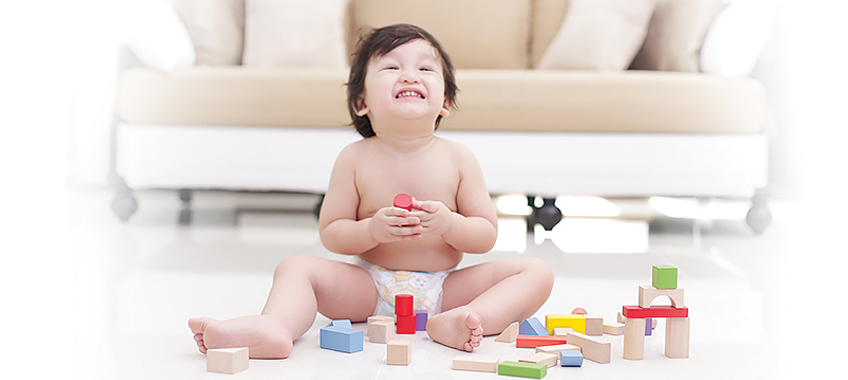Toddler-Proofing Your Home
You’ll quickly realize how your entire home is dangerous to a toddler’s health once they’re up and about. Every corner will look more pronounced, every small item more mischievous, and every socket more dangerous. Your home, however cozy, is filled with potential threats to your little one, so you’ll want to make it as safe as possible. Here’s how you can do so.
Nursery
Let’s start at ground zero. This room is where they’ll be spending majority of their time. Therefore, it is imperative that you keep it as baby-proof as possible.
To make the room safe, remove blankets, pillows, and plush toys from your toddler’s crib as all these pose suffocation risks. Apart from potentially killing softly, pillows and stuffed animals also make for great stepping stools for toddlers who want to break out of their cribs.
Mobiles are meant to both relax and entertain, but when babies are able to prop themselves upright, there’s a big chance they’ll try and reach for the mobile’s hanging pieces without your supervision. When your baby is able to stand, it’s time to put away the mobile; and since walking comes shortly after standing, you’ll want to add floor padding.
Remember those dangerous sockets? Cover them up with plastic outlet covers, preferably sliding ones! This goes for every outlet in every room your little one frequents.
Finally, go cordless. If your window blinds have cords, consider getting new ones without them. Children can easily get their necks caught in the cord’s loop and be strangled.
Living room
Coffee tables, entertainment consoles, shelves, benches or certain chairs: the living room is quite an edgy place for a baby with newfound mobility. Many of these corners and edges are right around eye level for a two-footer too, so be sure to cushion all edges with bumpers.
The living room typically holds a lot of décor as well, which means more breakables! Children can surprise you with how far they can reach, so keep all fragile mementos away from your little ones. For instance, picture frames are nice to look at but can easily shatter when dropped and can cut your child.
For taller, larger furniture like bookcases, be sure to secure them to the wall by way of bolts or adjustable locking furniture straps. You don’t want your child tipping over anything taller than them. This also goes for stairs; once your child is up and about, block the stairs with a baby gate.
Again, cover all outlets. While you’re at it, hide all electrical cords behind furniture.
Bathroom
Before anything, make sure to never leave your child unattended in the bathroom.
That being said, let’s start with the floors. Since they’re moist most of the time, invest in nonslip mats, and place some in the tub as well. In the immediate area outside the bathroom, consider placing rugs with non-skid backings, as your child might still be wet after a bath and looking to make a break for it.
Close toilet lids and keep them shut! Doing so keeps your child from unsanitary exposure, getting their fingers slammed on, and can even save them from drowning (it happens!).
Also, consider installing a medicine cabinet if your bathroom doesn’t have a place to store your medicines or razors. Even if these hazards are on a high shelf, at some point your child will try to reach for them.
Finally, make sure to pad your tub faucet and to use plastic soap dishes instead of glass or ceramic to be extra safe.
Kitchen
The kitchen is generally no place for a baby or toddler, so pretty much everything should be out of reach or in a latched cabinet, such as:
- Cleaning products
- Cutlery
- Utensils
- Plastic bags
- Kitchen appliances
- Dishes
- Glasses and other breakables
In fact, invest in plastic or unbreakable dishes and glasses to use when your child’s around. Unplug small appliances when not in use and be sure not to leave their cords dangling like fish bait.
Let’s not forget the refrigerator. Ensure that you close the door carefully after opening it, especially if your child is already able to open it on his own. Besides getting their fingers caught in the door, children could hurt themselves trying to reach for bottles and such on higher shelves and compartments.
General Tips
Now that the rest of your home is toddler-proof, here are other ways you can safeguard your kid:
- Keep hot food and drinks away from edges of tables and counters.
- Avoid using tablecloths or placemats as your child can easily tug and drag down everything on top of them.
- Anchor floor lamps or remove them altogether.
- Use doorstops and door holders to protect your child’s fingers.
For more information and EQ support, feel free to ask our experts here.
References:
http://www.parenting.com/gallery/babyproofing-your-home?page=0
http://www.parents.com/toddlers-preschoolers/safety/toddlerproofing/childproofing-home-room-by-room/
http://www.babycenter.com/childproofing-checklist-before-toddler-and-beyond

